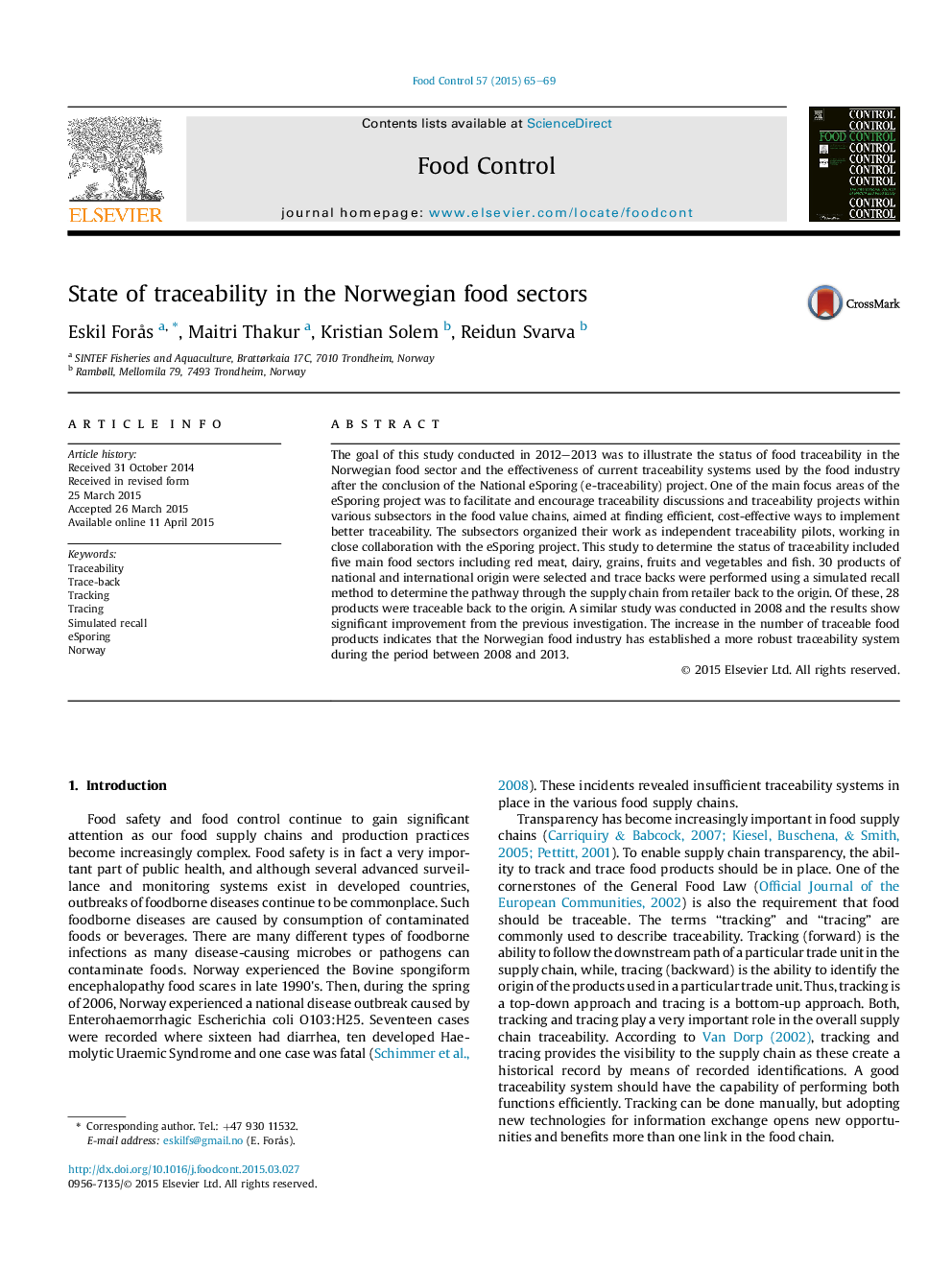| Article ID | Journal | Published Year | Pages | File Type |
|---|---|---|---|---|
| 6390699 | Food Control | 2015 | 5 Pages |
Abstract
The goal of this study conducted in 2012-2013 was to illustrate the status of food traceability in the Norwegian food sector and the effectiveness of current traceability systems used by the food industry after the conclusion of the National eSporing (e-traceability) project. One of the main focus areas of the eSporing project was to facilitate and encourage traceability discussions and traceability projects within various subsectors in the food value chains, aimed at finding efficient, cost-effective ways to implement better traceability. The subsectors organized their work as independent traceability pilots, working in close collaboration with the eSporing project. This study to determine the status of traceability included five main food sectors including red meat, dairy, grains, fruits and vegetables and fish. 30 products of national and international origin were selected and trace backs were performed using a simulated recall method to determine the pathway through the supply chain from retailer back to the origin. Of these, 28 products were traceable back to the origin. A similar study was conducted in 2008 and the results show significant improvement from the previous investigation. The increase in the number of traceable food products indicates that the Norwegian food industry has established a more robust traceability system during the period between 2008 and 2013.
Related Topics
Life Sciences
Agricultural and Biological Sciences
Food Science
Authors
Eskil Forås, Maitri Thakur, Kristian Solem, Reidun Svarva,
